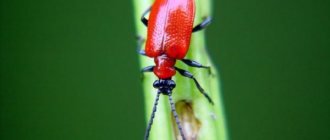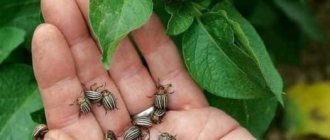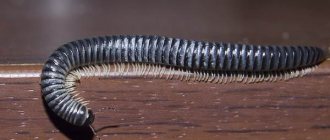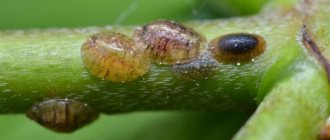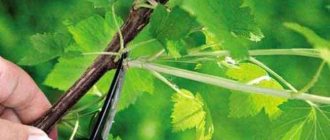Origin of the species and description
Photo: Golden bronze
The beetle from the bronze beetle subfamily belongs to the lamellar beetles. This species includes seven subspecies with different colors, body shapes, sizes, and they also have different habitats. Within each subspecies there are many options with shades of color and areas of body pubescence. Cetonia in the beetle's name means metallic, and the word aurata means golden.
There are up to 2,700 species of bronze beetles in the world; they are very diverse. For example, the heaviest bronze beetle in the world, the Goliath, lives in Africa, a distant relative of the golden variety. It reaches a length of 10 cm and weighs 80-100 g.
These large golden-green beetles fly with a loud buzzing sound, and when they crash into an obstacle, they noisily fall on their backs. First they lie pretending to be dead, and then they turn over with difficulty.
Adult insects are pests. They eat the inflorescences. The larvae, by processing dead organic matter, increase soil fertility. They bring about the same benefits as earthworms.
If the bronze beetle is startled, it can “shoot back” with an unpleasant-smelling liquid.
What kind of beetle is a bronze beetle?
Biologists distinguish 7 subspecies of insects, differing in their habitat, color variations and the number of hairs on some parts of the body. In general, golden bronze looks like this:
- The beetle is quite large. It reaches 22 mm in length and 11 mm in width. The chitinous shell of the body is colored green with a pronounced copper tint and metallic sheen.
Attention! In fact, the bronze is black, but the chitinous plates of its shell refract light so much that the human eye perceives it as green with various shades.
- The head is small, covered with many hairs.
- The antennae are small in size.
The golden bronze is found throughout Eurasia where trees and shrubs grow. You will not find it in mountainous areas and deserts. Bronzewort appears at the end of spring. Over the next 4 months, she can often be seen in the garden. The beetle is active only on clear days. On cloudy and rainy days, its activity disappears. With the onset of cold weather, the insect burrows into the soil next to the plants.
Common Bronzewort
Appearance and features
Photo: Golden bronze beetle
The first thing that catches your eye is the bright green color with a metallic tint. In fact, the beetle is black in color, and the structure of the integument, which circularly polarizes light, is responsible for such beautiful visibility. That’s why the coloring seems so changeable when viewed from different angles. Basically, it is a bright green metallic or green with a golden tint; it can have a copper sheen at the edges, but different subspecies have all sorts of aberrations.
The hard integument of a beetle consists of several very thin layers. The light is reflected repeatedly from each layer and superimposed, creating rainbow-colored tints.
The size of the beetle is from 1 to 2.3 cm. The body is wide - about 0.8-1.2 cm, convex on the back, slightly narrowed towards the tip. The upper part of the body is covered with hairs, but naked individuals are also found. The occipital region of the head is oblong with dots and black antennae. The remaining parts of the head have larger points and they are placed more densely. There is a keel-shaped protrusion in the center. The entire head is covered with whitish hairs.
Video: Golden bronze
The widest place is the pronotum, it is already closer to the head and is also covered with dots. The edges are rounded on the sides. The scutellum, located between the hard elytra and the pronotum, has the shape of an isosceles triangle with a blunt apex - this is a characteristic distinctive feature of this beetle. The scutellum is covered with dots. The elytra are dotted with arcuate strokes and thin white stripes.
The legs of beetles also have dots, wrinkles, and stripes. The fore tibiae have three teeth. The tibiae of the other legs also have one tooth. On the hind legs the tibiae are the same length as the tarsi, and on the remaining legs the tarsi are longer than the tibiae.
When flying, bronze birds do not spread their rigid wing covers. They have a notch on the sides, a cutout through which the beetles spread their membranous wings during flight.
How to deal with bronze
There are many ways to effectively combat golden bronze and other species of this family. Each gardener or florist selects his own optimal option.
Manual collection
Pests are collected in the morning, when the beetles sit motionless on the flowers. Shake the insects into a bag or onto a cloth/oilcloth spread under the plants. The collected bronzes are destroyed mechanically. This method justifies itself when there are a small number of pests in the garden. If more than 10-15 pieces have affected one plant, then urgent measures are taken before the insects spread further throughout the garden plot.
Chemical soil treatment
Pests feed during the day and go to the ground at night. In the evening, using insecticides of contact and intestinal action (Diazinon, Bazudin, Diazol), water the soil around the damaged plants. Use such an amount of the product that it penetrates 3-5 cm into the ground. Bronzeworts that come into contact with the poison die.
Popular spraying products: Aktara, Contract Plus, Confidor Extra, Senpai, Akarin. Treatment is carried out in the evening, when the sun sets, since beneficial insects are already resting at this time. Spraying is done once a week. Usually it is enough to repeat the manipulation 2 times. This allows you to get rid of bronze marks for a while. After 2-3 weeks, new pests arrive, so the treatment is repeated.
Do not use insecticides for spraying during the day, as this provokes the death of beneficial pollinating insects. If neighbors have an apiary, they are warned about the planned spraying of the plants.
Traditional methods
Some people prefer to fight bronzing with folk methods:
- Infusion of celandine. To prepare it, 100 g of dry grass is poured into 1 liter of boiling water. Keep the product in a dark place for 24 hours. After filtering, the infusion is used for spraying.
- Infusion of horse sorrel. To prepare, take 30 g of sorrel roots, previously crushed, which are poured with a liter of boiling water. Leave for 2-3 hours, filter, and then spray the affected plant once every 5 days.
- Wood ash. 15 g of ash are dissolved in 5 liters of water. Infuse the product for 1-2 days. Add 25 g of laundry soap, previously crushed on a fine grater, to the solution. Spraying procedures are carried out once every 5 days.
Since bronze beetles fly into bright light in the evenings, some use light traps to combat them. Other flower lovers have noticed that liquid smoke repels harmful insects well. Dissolve 45 ml of flavoring in 10 liters of water, as well as 50 g of dark laundry soap. This product does not wash off from plants for a long time, even during rains.
How to deal with bronzovkas is decided by the owners of their personal plots, depending on the severity of the problem. In some cases, these beetles only occasionally fly into beds or flower beds, so there is no need to mercilessly destroy them.
Loading…
Where does the golden bronze live?
Photo: Golden bronze insect
This beetle has a large habitat.
The beetle is found in Europe and Asia:
- starting from the south of Scandinavia, to the southern regions of the peninsulas and islands of the Mediterranean;
- in Asia Minor and Western Asia, in Iran (with the exception of desert areas);
- in the Central Asian republics to the north of Tajikistan;
- in the south the area borders the northern part of the Aral, along the banks of the Syr Darya River it reaches the Osh and Gulchi rivers;
- captures the Chinese province of Xinjiang;
- in Mongolia it reaches the river. Kharagol.
On the territory of the Russian Federation, the north of the range coincides with the Korel Isthmus, then passes through the Perm Territory, Yekaterinburg, capturing the north of the Omsk region, then goes through Western Siberia to the northern shores of Lake Baikal. The western shore of Lake Baikal is the eastern border of the distribution of the golden bronze, but it is also found in the Amur region. In the south it reaches the Caucasus.
This beetle lives in forest-steppes and steppes. In the steppe zone it prefers fescue-feather grass areas, since there are shrubs necessary for the normal life cycle of the beetle. Where there is no forest or bush, this species is not found. In the steppes, arthropods can also live in valleys and floodplains of rivers, where there is a more humid environment and there are shrubs and trees. Even in semi-desert areas you can find bronzeback, but only in the delta or floodplains. An example is the Terek floodplain of the Caspian desert.
The insect prefers sunny, illuminated places: edges, clearings, borders of forests and meadows, clearings and overgrown burnt areas. Insects can only be attracted to forest thickets by the sweet smell of nectar and tree sap.
In the northern regions, it likes to settle in open, warm areas of flat areas. In the south, on the contrary, the bronze can be found more often in mountainous areas. So in the area of Lake Issyk-Kul it is found at an altitude of more than 1.6 thousand m, on the Tien Shan mountain ranges it rises to 2.3 thousand m, in the Transcaucasus, in the Sevan region - 2 thousand m, in the Ciscaucasia up to 1 .6 thousand m.
Beetle wrecking
Despite their beautiful appearance, these insects are recognized as pests . The insect is a frequent visitor to the garden and vegetable garden, destroying flowers of fruit and berry crops, sucking juices and nutrients from plants. The beetle also gnaws leaves, leaving behind yellowed areas of plants. If an insect flies into the house, indoor flowers will suffer because the green beetle will gnaw on their leaves.
Bronzeweed harms the following plants:
- ovaries of carrots, cabbage, corn. Bronzeweed destroys those parts of plants that contain seeds;
- flowers of fruit trees. In this case, the beetles completely eat the stamens and pistils, after which the flower is unsuitable for fertilization. Therefore, fruits and seeds will not ripen on such a tree or bush plant;
- the insect destroys beet leaves;
- Ornamental plants lose their beautiful appearance and aroma after eating bronze.
Insect control
Previously, it was believed that this type of insect does not cause much harm to trees and plants, so there are no precise instructions for killing beetles . Adult beetles cause damage to plants, but the fight should begin with their larvae.
The habitat of the larvae is rotten wood and a pile of humus. Therefore, if you periodically clear your area of old leaves and rotten wood, you can reduce the number of adult individuals in the future. On the other hand, the bronze larvae contribute to the formation of a fertile soil layer by working through plant residues.
Fighting methods
The bronze beetle flies well, so chemical treatment will only harm trees and other plants.
- Manual method - by collecting and shaking off beetles. This method is the safest for the plant. To make it easier to shake off the bronze, you can sprinkle the plant or tree with cold water in advance. This water will stun the insects and they will easily fall off the plants. After the beetles have fallen, they must be placed in a container with kerosene. This method of control is low in effectiveness, because new ones will fly in to replace the destroyed beetles.
- An effective method of controlling insects is the use of light traps , which are used at night. Making such a trap is not difficult. For this, take an ordinary glass container. Then you need to place a lamp there. A container of kerosene should be placed near the light trap. At night, the bronze will fly towards the light, hitting the jar and falling into a container with kerosene.
- Method of spraying plants with herbal infusions . Bronzeworts cannot tolerate the smell of wormwood, garlic, horseradish and onions. Therefore, you can spray the plant using tinctures of these vegetables and herbs.
- Soil plowing method . After the winter period, you should dig up the soil, thereby destroying the beetles that are there.
- Method of instilling an anti-bug remedy . The beetle's sleeping place is the soil, so buried poison under fruit trees will definitely have an effect on it. However, such a chemical will not harm beneficial insects that pollinate flowers.
- Another method is to attract birds to the garden that feed on this type of beetle.
All of the above methods will help get rid of golden bronze. But it should be remembered that the green beetle is endangered , so it is necessary to fight it only in extreme cases.
What does the golden bronze eat?
Photo: Golden bronze
The adult insect can often be seen on the flowers of various plants. They especially adore roses and rose hips.
In some European languages, this beetle is called the rose beetle, due to its predilection for these flowers.
But they not only drink the nectar of flowers, they also eat the tender core and petals, seed baskets of umbrella plants, and cabbage. They do not disdain the young foliage of plants, and where sap flows from a tree, bronze beetles can throw a feast. Insects not only feed on plant flowers, but can also eat fruits and berries. The diet of beetles contains a lot of both cultivated and wild plants.
Among the fruit crops, these are: blackberry, apple tree, pear, apricot, plum, cherry, sweet cherry, dogwood, viburnum, rowan. Vegetables it can harm: cabbage, radishes, and legumes. Grains also suffer: corn, rye, buckwheat. Flower growers also blame bronze because it can destroy a flower garden from early spring to late autumn: irises, peonies, roses, lilacs, lupins and others.
Of the wild plants, insects have a wide choice of diet, there are all kinds of Rosaceae, dogwood, mallow, legumes, buckwheat, umbelliferae, beech, aster, Lamiaceae, iris, carnation and many other plant families. The larvae feed on rotting plant debris and can be found in leaf litter, rotten wood, and compost.
Damage caused by bronze
Bronzovka is a typical forest dweller, preferring sunny glades. Due to their frequent visits to garden plots in search of food, they are recognized as pests. The beetles are very voracious, destroying flowers of fruit and berry and ornamental crops, sucking juices from plants, leaving behind yellowed areas, and nibbling leaves. If beetles get into houses, they begin to eat indoor plants.
The damage caused by the bronze beetle to garden plots is that this beetle feeds on:
- flowers of fruit and berry and ornamental plants; they often eat young fruits of fruit crops;
- ovaries of cabbage, carrots, that is, parts of a plant or fruit containing seeds;
- beet leaves.
note
The beetles completely gnaw out the stamens and pistils - the reproductive organs of plants located inside the flower, so their pollination and fertilization becomes impossible, which means the ripening of fruits and seeds is also impossible.
At the same time, ornamental plants cease to perform their function, acquiring a nondescript appearance and losing their aroma.
Features of character and lifestyle
Photo: Golden bronze
The life cycle of the bronzovka is one year, in the northern regions – two years. In the spring, the beetles mate. If oviposition occurs early, then pupation occurs by the end of summer. Autumn beetles do not come out, remaining to overwinter in the pupa's cradle, but some individuals, if the weather is sunny and dry, fly out of their shelter.
Such beetles hide in secluded places for the winter, and in the spring they are the very first to fly out and begin to lead an active lifestyle long before the bulk of these beetles begin to fly. Larvae emerging from late oviposition remain in the third instar for the winter, and after overwintering, pupate in the spring. Due to this mixed life cycle, insects in different stages of development can be found in nature at the same time.
Bronze beetle larvae are often confused with chafer larvae, which harm plants by eating rhizomes. The color of the body of both insects is the same, but the legs of the beetle larva are much longer, the head is larger and the jaws with which they need to chew through living plant tissue are larger.
Insects are active during the day in sunny weather. In cloudy and cloudy weather they are sleepy and often freeze motionless on the plants. From the cold they hide in shelters and under leaves.
What harm does the cockchafer and its larva cause?
The caterpillars of this insect are called Khrushchev. The name seems to personify the harm that the larvae cause to summer residents. Having powerful mandibles, the caterpillars of the cockchafer continuously “crunch” the roots of plants.
Insects are omnivores - they eat coniferous, deciduous and fruit trees, and berry bushes. Garden crops and annual plants are not spared.
Adults do not lag behind the larvae. These prefer to feed on young leaves. With a large invasion of cockchafers, you can lose part of the plantings in a short time. Seedlings and young shoots are the first to suffer.
Khrushchev larva
Social structure and reproduction
Photo: Golden bronze beetle
To find a mate, beetles use their bright outfit, pheromone enzymes and growths on their antennae. They have the shape of a club made of several plates and can open like a fan. Such antennae are very sensitive and help males in finding partners. After the end of the mating relationship, the male’s life path ends.
Females lay eggs in rotten stumps, fallen trees, humus, compost, and anthills, after which they die. The larvae emerge from the white-yellow eggs after a couple of weeks and immediately begin to feed on organic plant debris, rotten leaves, rotting wood, and dead plant roots. As the larva matures, it goes through three stages through two molts.
The shape of the larva is C-shaped. The thick body is narrowed towards the head, cream-colored, its length is 4-6 cm. The head is about 3 mm, there are four teeth on the wide and short jaws. There are also teeth on the lower jaws; on the outside they are equipped with a palp. The jaws are quite powerful. Insects bite into rotting debris and grind it with their jaws, helping to process the compost.
The antennae are short and thick and consist of four segments. At the anal end there are two rows of sharp spines. The body is covered with bristles. The legs are short with appendages in the form of claws. It is difficult to move with their help.
The golden bronze caterpillar moves with greater agility, wriggling, on its back.
After finishing the third instar, the larva pupates where it fed. The pupa's cocoon is oval shaped and looks like a beetle. The caterpillar creates its cocoon-cradle from soil, decaying wood, and its excrement, gluing them together with secretory fluid. It is released from the anal end of the abdomen. The larva uses its tiny legs to create a cocoon. After half a month, an adult emerges from the pupa.
Natural enemies of golden bronzes
Photo: Golden bronze insect
Bronze larvae often live in an anthill. Badgers, foxes and other wild animals tear up ant heaps in winter to find tidbits there - bronze larvae.
Adult insects are often hunted by birds, among them:
- black-fronted shrike;
- jay;
- magpie;
- rook;
- jackdaw;
- roller;
- oriole.
Among the animals, caterpillars can be eaten by moles, representatives of the mustelid family: ferrets, martens, weasels. Bronzers can be a meal for hedgehogs, lizards or frogs.
Insects called scolias cause particular harm to these lamellar insects. The female of this hymenoptera thrusts her sting into the larva of the bronze fly, but not just like that, but in a special place - the abdominal nerve center, which is responsible for the movement of the insect. The victim of Scolia remains alive but paralyzed. This way it doesn’t spoil for as long as possible. This predatory wasp lays an egg on the abdomen of the larva. The larva that hatches from it does not immediately eat its prey. First, less important organs are used, gradually it reaches the nervous and circulatory system, eventually eating them too.
One can also count among the enemies of bronze beetles a person who in every possible way protects his plantings and manually, as well as with the help of chemicals, destroys the beetles themselves, and at the same time the larvae, often confusing them with other similar larvae of the cockchafer.
The fact that bronzebacks do not need to raise their wing covers when flying allows them to quickly take off from plants, avoiding encounters with the enemy.

